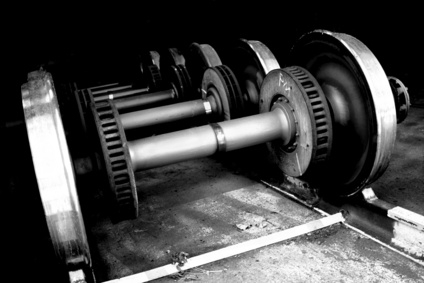
The CV (Constant Velocity) axle is a very important component in most rear- and front-wheel drive vehicles. By connecting two fixed rotating shafts with a set of CV joints, the axle maintains steering stability while handling the ups and downs from the vehicle's suspension. Either through time or damage, the axle can begin to fail and will produce a few warning signs.
As the joints on the CV axle begin to erode, they can create blind or hard spots. When this happens, the axle will bind up while making turns and during vehicle acceleration. This can result in vibration or shuddering in the front suspension area that will move quickly through the car during acceleration and deceleration; the most likely focal point will be the steering wheel.

Like many components, the CV axle and joints need lubrication to run smoothly in the constant heat generated by an automobile. If that lubrication begins to dissipate--most likely through leaks in the axle boots--this can cause damage to gears and wheel bearings. When this happens, the vehicle will produce a humming and growling noise as speed increases and lubrication decreases.
In addition to humming, a defective CV axle can develop any number of clicks, pops and clunks as the damage to the axle joints worsens. If a clunking noise is heard while speeding up or slowing down, it can mean damage to the inner and outer CV joints. Continuous knocking, while driving at low speeds, may also be due to joint damage. Clicking or popping sounds may be indicative of a bad outer joint. If any of these noises occur, the vehicle should be taken to a repair shop for further investigation.